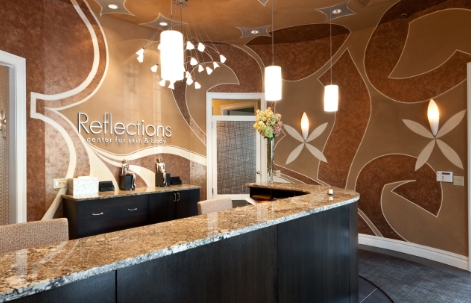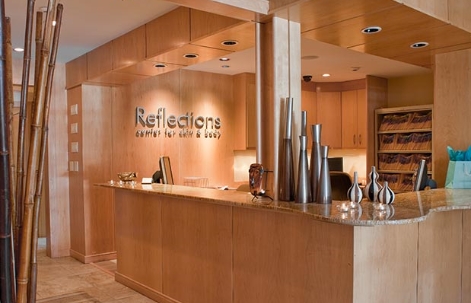Reverse Aging: A Guide to Natural Looking Results
Dr. Wix- Harris sits down to walk us through the journey of one of her ideal patients. With consistent treatments, this patient has achieved extremely natural, beautiful results.
As we age, we know our skin will age with us – but it’s perfectly normal to want to slow down the process as much as possible. But what if you could reverse it? This process is typically easier said than done, but consulting a cosmetic physician is one of the best steps you can take for preventing and reversing aging. Here’s what to know about reverse aging and how our team here at Reflections Center can help.
What Causes Aging?
The two primary reasons for skin aging are your genetic makeup and environmental factors such as the ultraviolet radiation from the sun. Going out into the sun virtually destroys the matrix of the skin, as it takes very little ultraviolet radiation to degrade collagen. Called photoaging, too much sun exposure can cause wrinkles, loose skin, and other visible changes, such as uneven texture, brown spots, and red spots. This premature skin aging also damages the skin’s ability to fight off germs and bacteria, provide temperature regulation, and heal wounds. Perhaps most frightening, photo-aging also contributes to an increased risk for skin cancer. This is why wearing strong sunscreen and keeping vulnerable skin covered is so important.
Smoking also has a devastating effect on the skin. Smoking causes exaggerated wrinkles by pursing the lips and, by denying adequate oxygen to the cells, affects the appearance of the skin all over the body. It’s a particularly bad choice before and after any kind of invasive treatment such as cosmetic surgery, as wounds can heal poorly due to the compromised skin quality.
What is Reverse Aging?
The goal of reverse aging is to appear younger than you did previously. At its core, it’s a process of making small, manageable improvements to the skin and other layers of the face in order to restore their youthful quality. Because aging affects all layers of the face (skin, fat, muscles, ligaments, and bone), it’s important to address each one. Done correctly, you can actually reverse signs of aging without invasive surgery.
What are the Best Treatments for Reverse Aging?
Reverse aging works best as a combination approach. Our award-winning cosmetic physicians can help you put together the right schedule of treatments for your needs.
Reverse-Aging Treatments
Technologies like Sofwave and radiofrequency microneedling are two of the best ways to stimulate collagen in the deeper layers of the skin. Collagen plays a vital role in the appearance and youthfulness of your skin – but both of these options also go beyond just stimulating collagen. They also improve skin laxity to tighten, lift, and reduce the appearance of fine lines and wrinkles. Sofwave is a great way to jumpstart the reverse aging process, and RF microneedling can be used as a maintenance treatment to continually boost collagen growth and prevent breakdown.
Botox and Alternatives
Botox is one of the most common aesthetic treatments and for good reason. Botox works by blocking nerve activity, which can be used to great effect in the muscles of the face. Called dynamic wrinkles, certain aging signs are caused by muscle movements that come with expressions like frowning or squinting. By blocking muscle movements, Botox smooths wrinkles and also prevents their further formation. Used alongside treatments designed to tighten the skin and reduce the appearance of wrinkles, it can be a powerful option.
Dermal Fillers
Dermal fillers can restore volume lost as a result of aging. Over time, gravity begins to take a toll on the tissues of the face. At the same time, the connective tissues that keep your skin youthful and upright can begin to break down. The overall result is sagging and hollowness. Done correctly, fillers can restore volume, lifting the skin and tissues and recapturing a more youthful and lifted look.
Reverse Aging at Reflections Center for Cosmetic Medicine
At Reflections Center for Cosmetic Medicine, we offer industry-leading ways to reverse aging signs and look younger than ever. To get started, contact our Bridgewater and Livingston offices by calling or filling out our online form.







